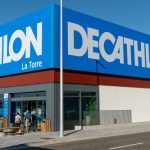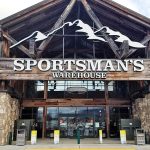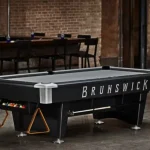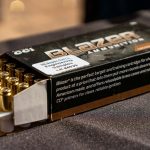Hudson Trail Outfitters Ltd told its vendors last week that it only has enough assets to pay about 35 percent of its $11 million in outstanding debt, according to a letter obtained by The B.O.SS. Report.
In the August 28 letter, the Maryland-based retailer revealed it was conducting a going-out-of-business sale and planned to close its four remaining stores in Washington D.C., Rockville, MD, and Arlington and Fairfax, VA, by December 1. The company operated nine retail locations in 2010.
“The demise of the business can be traced to declining sales due to increased competition from larger retailers and from online retailers,” reads the letter, which is signed by Sandy Cohan, CEO, Susan Strain, CFO, and Stacey Cohan, GMM. “As a result, the Company anticipates that it will be unable to continue to pay its debts and operating expenses, forcing the Company to make the decision to close.”
While the letter instructs creditors to send inquiries to a Rockville, MD, law firm and notes the company has engaged Winter Harbor LLC and Gordon Brothers to help run the going-out-of-business sale, it was not immediately clear whether it planned to file a Chapter 7 bankruptcy petition, which would provide it protection from creditors while it liquidates its assets. In an exchange of emails last week, Sandy Cohan decline to say whether the company is preparing a bankruptcy petition or respond to several other questions posed by The B.O.S.S. Report in an attempt to confirm facts.
The letter lists Hudson Trail Outfitters’ (HTO) the company’s major creditors and debts in the following order:
- Salus Capital Partners, HTO’s senior lending partner, which is owed approximately $3.2 million, which is secured by a perfected UCC lien on all of the Company’s assets;
- payroll and sales tax liability of approximately $85,000;
- vendor and other unsecured debts of approximately $3 million; and
- accrued rent and contingent lease liability to landlords in excess of $4 million.
- Hudson Trail Outfitters estimates the cost value of its inventory to be $3.8 million, and the liquidation value of its other assets, such as furniture and store fixtures, to be $50,000, which equates to about 35 cents on the dollar.
“The Company will continue to work closely with its secured lender during this process,” HTO’s executives wrote in the letter to credits. “HTO will pay unsecured creditors, pro rata, the proceeds, if any, from such liquidation after payment of all administrative expenses; the satisfaction of the Salus secured debt, and any outstanding tax liabilities. While the Company has no way of knowing whether there will be funds available to pay unsecured creditors, HTO is committed to conducting the closing of the business and the liquidation of the assets in the most efficient manner possible in order to maximize recovery to creditors.”
Industry sources told The B.O.S.S. Report the Cohans – like many specialty retailers – struggled to adapt to rapid changes in consumer behavior and retailing brought on by the Internet.
Hank Cohan’s legacy
HTO was founded in 1971 by Hank Cohan, a scrappy old-school retailer who played a lead role in launching specialty outdoor brands during the industry's formative years in the 1970s and 1980s, according to Ray Ferrand, a manufacturer’s rep who has called the Cohans for years.
“When Hank Cohan started this company and really had to it screaming along, he was the first guy you wanted to see when you had a new line,” said Ferrand. “He was always one of the guys who beat you up on price, but he was the guy who said 'I'm going to make this happen in this market,' and he did. There was nobody who knew their market better.”
Even so, HTO filed a Chapter 11 bankruptcy petition in 1992 seeking protection from creditors after a bank cut off his financing in the wake of the savings and loan crisis. Unnamed sources cited in an article published by The Washington Post at the time speculated that the company – then 13 locations strong – had drifted away from its origins as a core shop for outdoor enthusiasts. The company existed Chapter 11 in 1997 after closing several locations.
Surviving the Great Recession
Like many retailers, HTO survived the Great Recession by focusing on inventory turn, which included shifting more of its open to buy dollars to lower priced accessories, Sandy Cohan explained in an interview in early 2010. But he insisted HTO remained committed to a full-price retail model that hired authentic outdoor enthusiasts to provide excellent customer service.
“We are not in price game,” he said at the time. “We are in the high-service game.”
Cohan outlined how HTO had tweaked its clinics and group outings to make them more family friendly and social to represent the changing demographics in its market. The retailer began offering mountain biking ride, for instance, on less technical trails that ended with a cookout.
By 2009, however, HTO was facing another challenge REI. That fall, the Seattle-based retailer targeted Washington D.C. along with seven other U.S. cities in its first national television advertising campaign. The campaign came as REI was preparing to open a new 525,000-square-foot distribution center in Pennsylvania to service the East Coast.
The new generation takes over
Industry sources said that Hank Cohan retired and handed over daily operations to his son Sandy and daughter Stacey in or around 2010, while the company still operated as many as nine stores and REI was opening its fourth location in Maryland.
Contacted by email Friday morning, Sandy Cohan said the chronology and store count were not accurate, but declined to provide the correct information.
By spring 2012, REI had grown its presence in the DC Metro area to six stores.
About this time, industry sources say HTO began to partner more closely with major outdoor brands that could provide co-op advertising dollars and promotional dollars. Some sources say this put the company in more direct competition with the big-box sporting goods retailers that carried those more widely distributed brands a charge that also emerged in the wake of the company’s 1992 bankruptcy.
May 2013 loan
In May, 2013, announced it had secured a working capital loan from Salus Capital – an asset-based lender. While such lenders sometimes work with fast-growing companies that can't quality for conventional bank loans due to liquidity issues, they tend to specialize on lending to distressed companies that are in turn-around mode. While asset-based lenders can provide greater flexibility, they are considered a lender of last resort by many retailers because they require weekly – or even daily – reporting on cash and other assets levels.
In their August 28 letter to vendors, HTO's executives said the company, “sincerely regrets that it is unable to satisfy all of its debts. The Company has always deeply valued the relationships with its vendors, many of which have been in place for close to four decades.”
REI, meanwhile, continues to plan for the opening next spring of a 50,000-square-foot flagship store in Washington DC that will bring its store count in the region to eight.















